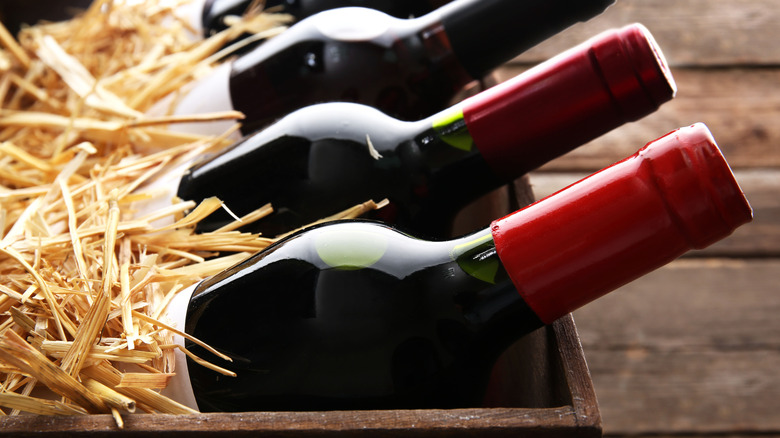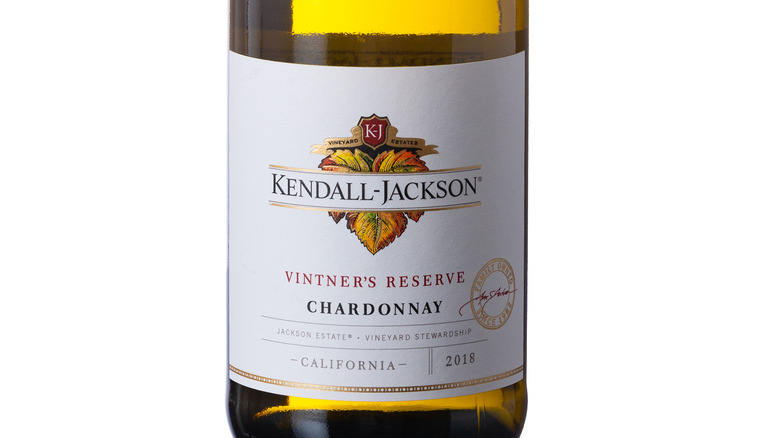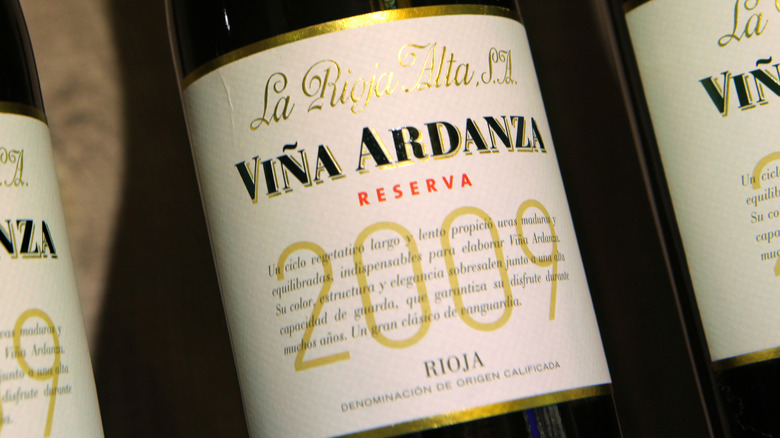What Does 'Reserve' Mean On A Wine Label?
As consumers, we generally expect that a wine's label will tell us what's in the bottle. We trust that a wine labeled as being Cabernet Sauvignon, for example, will be Cabernet Sauvignon — though for wines from the U.S., that may only be 75% correct, according to Alcohol and Tobacco Tax and Trade Bureau (TTB) regulations. The TTB requires certain information on wine labels, like alcohol content, and many wineries also choose to include information about where the wine comes from, what year the grapes were harvested, where the grapes were grown, where the wine was bottled, and sometimes wine labels include tasting notes or details about the wine's production, like whether the wine was aged in stainless steel, concrete, or oak.
While each winery may choose how much or how little to tell you about a wine, in addition to the legally required elements, in general, consumers expect that what we read on a label will not only be true but will also mean something of significance. And that expectation, according to My New Orleans, isn't exactly realistic. In fact, they explain that the back label of a wine bottle is more likely to be written by a winery's marketing team, rather than its winemaking team, serving up descriptions meant to sell the wine, rather than simply to educate.
All of that brings us to the term "reserve." When you encounter this description on a wine bottle, what does it mean?
What does reserve mean in the U.S.?
Wine Folly explains that the first thing consumers need to understand is that "reserve" isn't a regulated term on U.S. wine labels, which means that in a legal sense, the term is essentially meaningless. The problem, Vine Pair explains, is that casual wine drinkers (that's most of us) assume that "reserve" on a label means it's more special, a wine that may have been aged longer or might come from a special parcel of a vineyard.
Vine Pair offers up an example: Kendall-Jackson's Vintner's Reserve Chardonnay, which the winery touts as "America's #1 selling Chardonnay for 30 years and counting." The problem? Vine Pair points out that K-J's Reserve Chardonnay is the lowest tier of wine the winery produces. It's a reserve in name only.
Some wineries do use the word "reserve" in a meaningful way, to designate small lots of wine, sometimes even individual barrels that have been selected because they're distinctively delicious, like Storybook Mountain Vineyards Estate Reserve Zinfandel. Others may age reserve wines longer or use grapes from a tiny parcel, like Robert Keenan's Merlot Reserve, Mailbox Vineyard, which comes from a single, 11-acre vineyard. The point is, though, that "reserve" can either mean a whole lot, or absolutely nothing at all. You have to dig a little if you want to know if "reserve" is genuinely special or if it's an empty marketing term.
To make things a bit easier, that's not the case for wines from two countries.
In Spain and Italy, reserve is a legally regulated term
If you pick up a bottle of red wine from Spain, and it's labeled "Reserva" or "Gran Reserva," legally, those terms are meaningful. Reserva red wines must have been aged for at least three years, typically two years in oak barrels, and the rest in the bottle before the wine is released, according to Decanter. Gran Reserva red wines must be aged for a total of at least five years, at least two years in oak and the rest in the bottle. Additionally, there are Reserva whites and rosados, which have different aging requirements (via Decanter).
Similarly for Italian wines, "Riserva" has a legally defined meaning, though the aging requirements differ depending on where the wine is produced, according to Eataly. Amarone della Valpolicella Riserva, for example, must be at least four years old. Barolo Riserva must be at least five years old, and the same is true for Brunello di Montalcino Riserva. Chianti Classico Riserva must be at least 27 months old (per Eataly).
For both Reserva and Riserva wines from Spain and Italy, the reserve designation means the wines will have been aged longer than non-reserve wines, and it usually means the grape selection is more rigorous, producing wines that are of higher quality and which carry a higher price tag.


